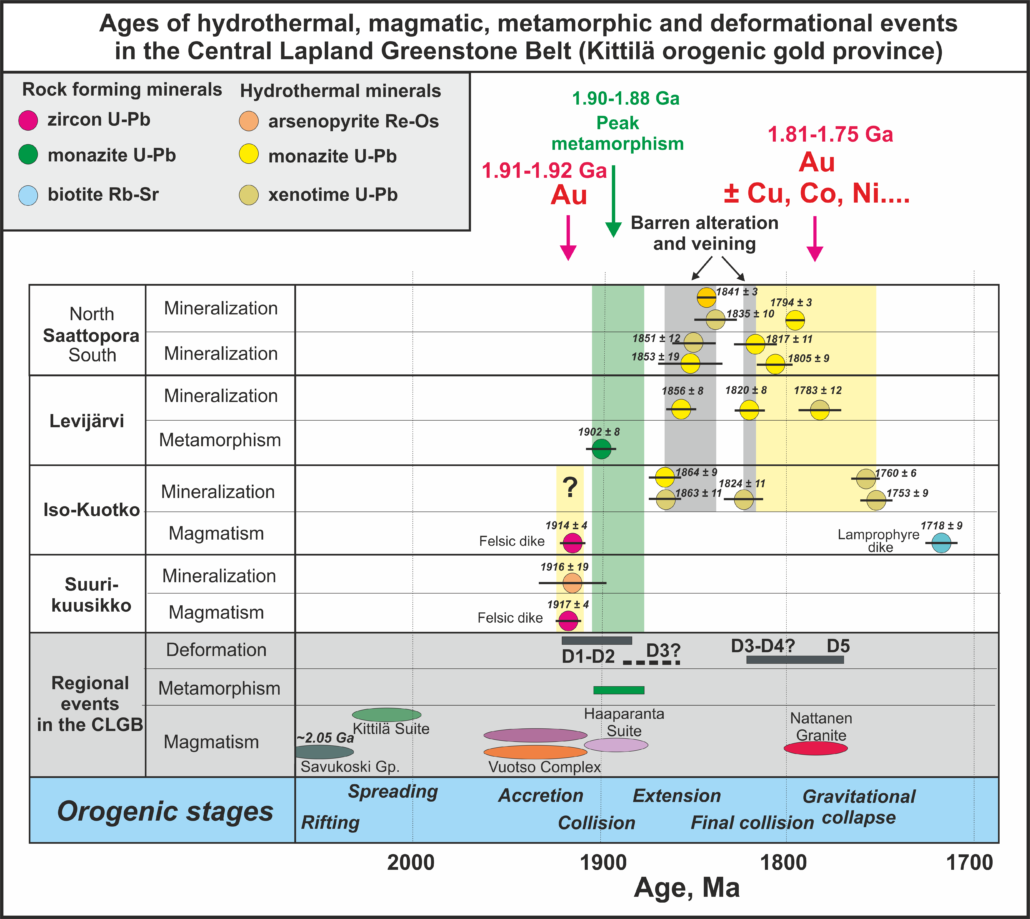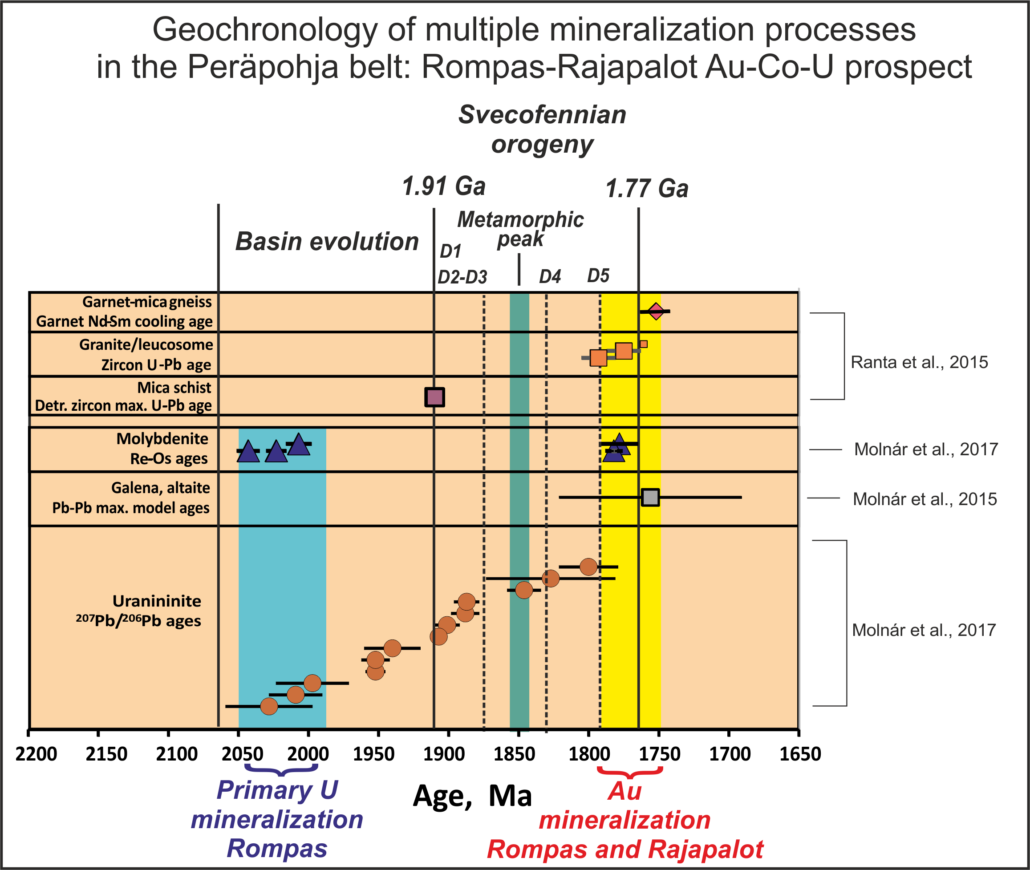
Orogenic gold deposits are widespread in the 2.45-2.0 Ga Paleoproterozoic basins of northern Finland; e.g. in the Peräpohja belt, Kuusamo belt and Central Lapland Greenstone belt (Kittilä Au province). Many of these deposits also contain significant concentrations of Cu, Co, Ni, as well as local enrichments of uranium, molybdenium and rare earth elements.
The compositions of the sedimentary and volcanic sequences, occurrences of carbon isotope excursion, ages for emplacement of 2.4-2.3 Ga and 2.2-2.1 Ga mafic dike swarms, as well as the presence of sulphidic-graphitic/black schist in the upper parts of the basin fill are largely comparable in the Paleoproterozoic basins of northern Finland. Similar sequences in rift basins with approx. 2.45-2.0 Ga age globally occur on the “Kenoraland” supercontinent which has been amalgamated during the Neoarchean orogenic processes.
The 400-500 mill. years long evolution of the Paleoproterozoic basins initiated by intracontinental rifting at 2.41-2.40 Ga and evolved into continental margin rifting. Locally, in the Kittilä province, the basin evolution terminated by opening up of narrow oceans and back arc basins at around 2.0-1.95 Ga. The protracted basin evolution can be connected to repeated doming, staging and final disruption of the Archaean basement above a long living mantle plume.
The protracted tectonic evolution of the Paleoproterozoic basins in northern Finland created favorable and elongated/repeated conditions for transportation of metals from the mantle to the upper crust. Re-distribution and concentration of metals into favorable structures took place during the superimposing 1.93-1.80 Ga Svecofennian magmatism, metamorphism and deformation.
Precise and texturally controlled U-Pb and Re-Os ages for hydrothermal minerals (monazite, xenotime, uraninite, rutile, arsenopyrite) from gold-only and gold-(uranium)-base metal deposits are available from the Kittilä and Peräpohja metallogenic provinces.
The Peräpohja belt is characterized by multiple mineralization events along repeatedly re-activated structures which were inherited from the early basin/rifting stages of the tectonic evolution. Uranium bearing veins had already been formed during the late stages of basin evolution. The early veins were multiply deformed and recrystallized during the Svecofennian tectonic and metamorphic events. Concentration of gold is also restricted to the 1.8-1.75 Ga post-orogenic tectonic stages in the Peräpohja belt.
(Last update: 20.05.2020)
In the Kittilä province (Central Lapland Greenstone Belt) formation of orogenic gold deposits occurred in two major time intervals. The largest known gold-only deposit at Suurikuusikko (Kittilä Mine) formed at 1.91-1.92 Ga, during the early micro-continent accretion stages of the Svecofennian orogeny, prior to the 1.90-1.88 Ga greenschist facies peak metamorphism. Repeated reactivation of major faults with barren hydro-thermal pulses occurred between 1.86-1.81 Ga. Gold deposition in several small deposits (e.g. Levijärvi, Saattopora, Iso-Kuotko) overprinted the early hydrothermal assemblages during the 1.81-1.75 Ga late-to post-orogenic stages of the Svecofennian tectonic evolution.
Preliminary data also indicate similarly late-orogenic (1.81-1.80 Ga) ages for gold mineralization in the Au-Co-Ni deposits in the Kuusamo gold province.

